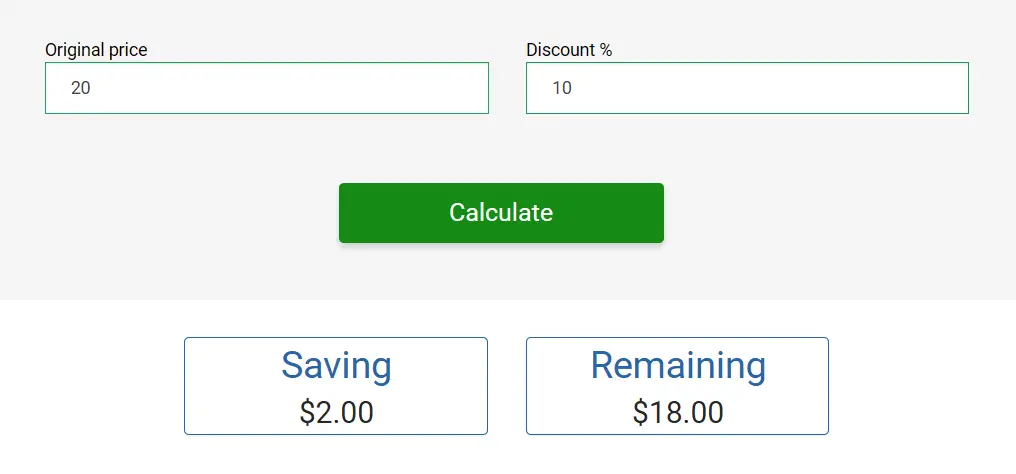Mastering Discount: Definition, Formulas, Types, and Calculations
Unlocking the Art of Discounts
The decrease in the amount of a service and product is known as a discount. Discount is a method, which is used by executives to attract new customers. That is used to increase the sales and retain the existing customers.
It is a concession extended to customers from the listed price of goods or services. Shopkeepers provide discounts to customers to boost the sales of goods. This article will cover the definition, formulas, and procedure to calculate the discount.
Definition of Discount:
A discount denotes a decrease in the original price of a product. It is a way to represent how much inexpensive a product is being sold compared to its original cost. This can be represented as a percentage or a specific amount.
Before exploring deep into the discount let us understand a few basic terms we’ll utilize when computing discount.
Basic Terms of Discount:
Cost Price:
The initial price at which a product or item is bought by a business or an individual.
List price/Marked price:
The price that a product is shown as being available for purchase by the seller, before any reductions.
Selling Price:
The total amount a customer pays for a service after any applicable markdowns or discounts.
Common Types of Discounts:
Some common types of discount are:
-
Quantity Discount
A quantity discount (a.k.a volume discount) is a pricing approach planned to inspire customers to purchase larger quantities of a product. This is achieved by providing a reduced unit price for bulk purchases.
-
Trade Discount
A trade discount is performed to retailers to stock the seller's goods. This discount is typically authorized when the buyer exercises significant control over the seller.
Formulas of Discount:
There are 2 main formulas used to calculate discounts:
1. Discount Amount:
This formula calculates the actual saved money by deducting the sale price from the initial price.
Let:
- List Price (L) is the item's initial price.
- Selling Price (S) is the whole amount that the buyer pays.
- Discount Amount (D) is the amount of money saved.
Formula:
D = L - S
2. Discount Rate:
This formula demonstrates the discount as a percentage of the original price.
Formula:
Discount Rate (%) = (Discount Amount (D) / List Price (L)) x 100
How to calculate the Discount?
The calculation of the discount can be done in the following two cases.
Case No 1. When both the marked price and selling price are provided.
Steps:
- Write down the retail price and selling price.
- Substitute the provided values into the formula and determine the discount.
Case No 2. When the discount percentage is provided
There are two methods to compute the discount amount when the discount percentage is provided.
Method 1:
Steps:
- Write down the list price and discount percentage (%).
- Write the formula.
- Plug the provided values in the given formula to resolve the discount amount.
- Find the selling price after deducting the discount from the listed amount.
Method 2:
Steps:
- Transform the discount percentage (%) into a decimal.
- Find the discount amount after multiplying the list price with the decimal.
- Find the selling price after deducting the discount from the listed amount.
.jpg)
Examples of Discounts:
In this section, we’ll solve some examples to gain more understanding of this topic and know how the discount applies to our daily life routine.
Example 1
Calculate the discounted price and discount rate for a product with the original price of 80$ and a discounted price of 64$.
Solution:
Given:
- List Price (L) = $80
- Selling Price (S) = $64
- Discount Amount (D) = List Price - Selling Price
D = $80 - $64 = $16
- Discount Rate = (Discount Amount ÷ List Price) * 100
D.R = (16 ÷ 80) *100 = 20%
Example 2
A mobile company gives its clients a ten percent discount. Find the new price once the trade reduction is applied, for example, if the initial cost of the mobile device was $20.
Solution:
Given:
- List Price (L) = $20
- Trade Discount Rate = 10%
- Transform the trade discount percentage into a decimal:
Trade Discount Decimal = 10% ÷ 100 = 0.10
- Calculate the discount amount:
Discount Amount (D) = List Price * Trade Discount Decimal
= $20 * 0.10 = $2
- Deduct the discount amount from the list price to find the selling price:
Selling Price (S) = List Price - Discount Amount
= $20 - $2 = $18
You may also use online discount calculators, such as Prepostseo discount calculator to quickly find a discount on any item or product.

Example 3
If a bookshop gives a 15% discount on buying 5 or more books, calculate the selling price for the customer who buys 6 books at the original price of $50 per book.
Solution:
Given:
List Price (L) = $50
Quantity Discount Rate = 15%
Number of Chairs = 6
- Transform the quantity discount percentage into a decimal:
Quantity Discount Decimal = 15% ÷ 100 = 0.15
- Calculate the discount amount per chair:
Discount Amount per Chair: $50 * 0.15 = $7.50
- Total Discount Amount for 6 chairs:
Total Discount Amount: $7.50 * 6 = $45
- To get the selling price, deduct the total discount from the total list price.:
($50 * 6) - $45 = $300 - $45 = $255
Conclusion:
In this comprehensive article, we have covered all the basics of discounting, including its different types, formulas, and calculation methods. Through solved examples, we also looked at how to compute these discounts efficiently.
 English
English
